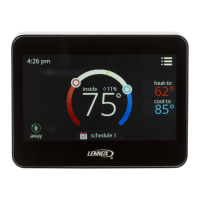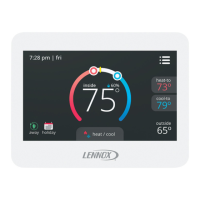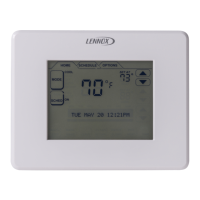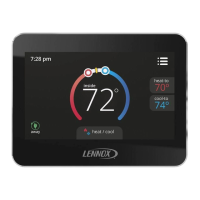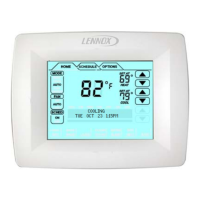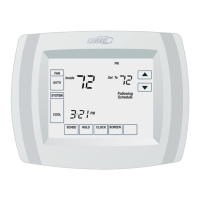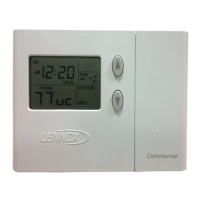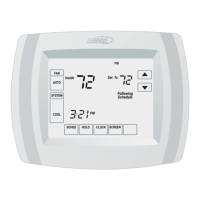7
Wiring Thermostat
Below are the terminal designations and a general
description of their purpose.
1. Connect wiring between thermostat, indoor
and outdoor units.
2. Connect internal and external sensors if
applicable. See information starting on page
9 for sensor wiring and configuring sensor
settings under the Installer Settings menu.
NOTE - Wire run should not exceed 300 feet
(100m).
3. Seal the hole in the wall with a suitable material
to prevent drafts from entering the thermostat
case.
4. Configure thermostat and equipment for
system type, program the thermostat, and test
system.
Terminal Designations
Ti - Remote indoor temperature sensor
Tc - Sensor common terminal
To - Outdoor or discharge air temperature
sensor
Ec - Economizer/Time-of-Day (TOD)
output-powered via R terminal.
D - Dehumidification relay
W2 - Second-stage heating (non-heat pump) or
fourth-stage (heat pump)
Y2 - Second-stage heating or cooling
O/B - Heat/Cool active reversing valve
F - Economizer or other fault detection
C - Common 24VAC
G - Fan relay
W1 - First-stage heating (non-heat pump or
emergency heat) or third-stage heating
(heat pump)
Y1 - Compressor output
R - 24VAC power
IMPORTANT
In all applications, the commercial version of the
ComfortSense
®
Model 7500 thermostat can only
be used if the following installation criteria is met:
S installation uses 18 GAUGE thermostat
wire or larger,
S thermostat wire run length DOES NOT EX
CEED 300' (91m),
S load from any thermostat connection is 1
AMP or LESS.
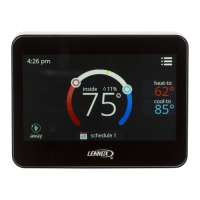
